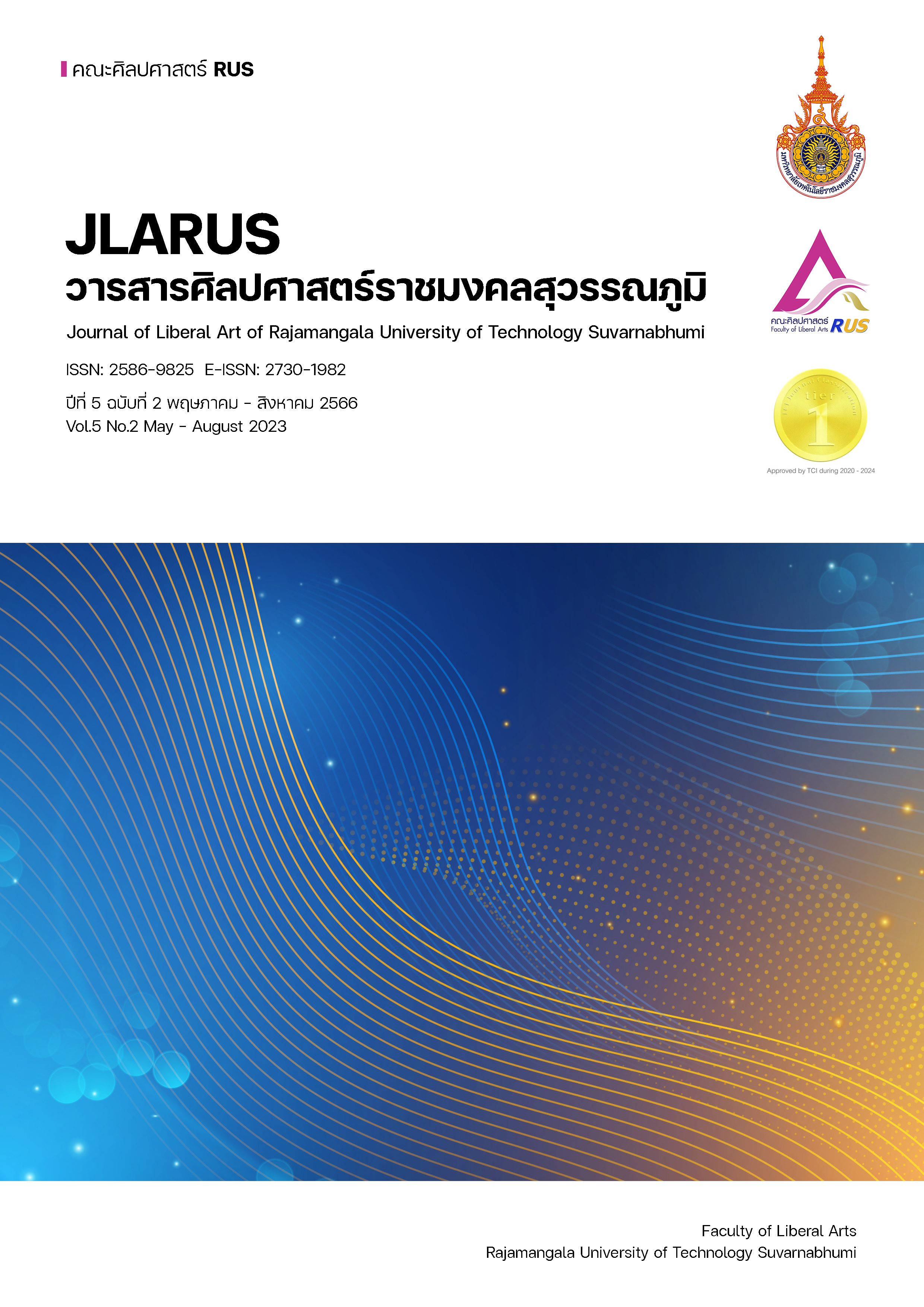THE PARTICIPATAORY DEVELOPMENT OF COMMUNITY INNOVATION BASED ON THE SUFFICIENCY ECONOMY PHILOSOPHY, NAKHON PATHOM
Main Article Content
Abstract
The objectives of this action research were to: 1) develop participatory community innovation based on the philosophy of sufficiency economy, and 2) drive participatory community innovation towards sustainable quality of life development. There were 2 target areas: Nong Krathum Subdistrict, Kamphaeng Saen District, and Wang Taku Subdistrict, Mueang District, Nakhon Pathom Province. A participatory action research process was used as a research method. The 34 co-researchers consisted of community leaders, local administrators, and public volunteers, selected by purposive selection. Data was gathered through community forums, surveys, in-depth interviews, focus group discussion and lesson-learn. Data were analyzed using descriptive statistics, content analysis and practical knowledge extraction.
The results show that most people are sick with chronic non-communicable diseases, due to lifestyle, consumer behavior, and lack of exercise. The two communities, therefore, agreed to improve the quality of life on the issue of safe vegetable consumption and reduce the use of chemicals. Household organics that contribute to participatory community innovation development is the “Keyhole Garden.” There are 7 steps in order to develop and drive the innovation to the communities: 1) community forum, 2) study and take lessons, 3) develop a manual for making keyhole garden, 4) practice experiments on sample plots, 5) summarize experimental results, 6) transfer knowledge and technology, and 7) volunteers develop keyhole gardens for vulnerable people. 37 gardens are outcomes from this research process. The community's perception of innovation, relative advantage aspect is moderate, while the compatibility aspect is at a high level. The overall satisfaction with the development and use of the keyhole garden is at a high level.
Article Details

This work is licensed under a Creative Commons Attribution-NonCommercial-NoDerivatives 4.0 International License.
References
กระทรวงดิจิทัลเพื่อเศรษฐกิจและสังคม. ระบบบริหารจัดการข้อมูลการพัฒนาคนแบบชี้เป้า. (2565, พฤศจิกายน 7). สืบค้น 15 มกราคม 2566. จาก https://www.tpmap.in.th/.
กาญจนา แก้วเทพ และ สมสุข หินวิมาน. (2551). สายธารแห่งนักคิดทฤษฎี เศรษฐศาสตร์การเมืองกับสื่อสารศึกษา. กรุงเทพมหานคร: ภาพพิมพ์.
แคล้ว มนตรีศรี และ จักรนรินทร์ วารินทร์. (2562). ขยายผลกระบวนการผลิตเกษตรอินทรีย์เพื่อลดความเสี่ยงการใช้สารเคมีการเกษตรจังหวัดหนองบัวลำภู. (รายงานการวิจัย). กรุงเทพมหานคร: สำนักงานคณะกรรมการส่งเสริมวิทยาศาสตร์ วิจัยและนวัตกรรม.
นิศากร สุวรรณ ปิยะรัตน์ ทองธานี พัชรี ปัญญานาค และ โสภิตา สมบูรณ์. (2563). สวนรูกุญแจ นวัตกรรมด้านการเกษตรท้องถิ่นโดยการมีส่วนร่วมของชุมชน: กรณีศึกษา เทศบาลตำบลยางเนิ้ง อำเภอสารภี จังหวัดเชียงใหม่. วารสารการพัฒนาชุมชนและคุณภาพชีวิต, 8(1), 107-120.
ประเวศ วะสี. (2545). นวัตกรรมสังคม: ทางเลือกเพื่อประเทศไทยรอด. กรุงเทพมหานคร: โรงพิมพ์ดี.
ยุทธศาสตร์ชาติ 20 ปี พ.ศ.2561-2580. (2561, 13 ตุลาคม). ราชกิจจานุเษกษา. เล่มที่ 135 ตอนที่ 82 ก, หน้า 1-61.
สถาบันส่งเสริมการจัดการความรู้เพื่อสังคม. (2560). พิมพ์เขียว Thailand 4.0 โมเดลขับเคลื่อนประเทศไทยสู่ความมั่งคั่ง มั่นคง และยั่งยืน.
สำนักงานจังหวัดนครปฐม. (2561). แผนพัฒนาจังหวัดนครปฐม พ.ศ. 2561-2564. สืบค้น 20 ธันวาคม 2565. จาก http://www.oic.go.th/FILEWEB/CABINFOCENTER1/DRAWER022/.
อภิชัย พันธเสน. (2565). ภาวะผู้นำภายใต้บริบทนวัตกรรมสังคม. ปทุมธานี: วิทยาลัยนวัตกรรมสังคม มหาวิทยาลัยรังสิต.
Cohen, J. M. & Uphoff, N. T. (1977). Rural Development Participation: Concepts and Measures for Project Design, Implementation and Evaluation. Rural Development Committee, Center for International Studies. New York: Cornell University Press. GENERAL/DATA0001/00001321.PDF.
Gill, I. S. & Kharas, H. (2015). The middle-income trap turns ten. World Bank Policy Research Working Paper (7403). Retrieved September 29, 2022. from https://ssrn.com/abstract=2651983
https://waa.inter.nstda.or.th/stks/pub/2017/20171114-draeqa-blueprint.pdf.
Rogers, E. & Shoemaker, F. F. (1971). Communication of innovation: A cross-cultural approach. 2nd Edition. New York: Free Press.
Rogers, E. (2003). Diffusion of Innovations. Fifth edition. New York: Free Press.


